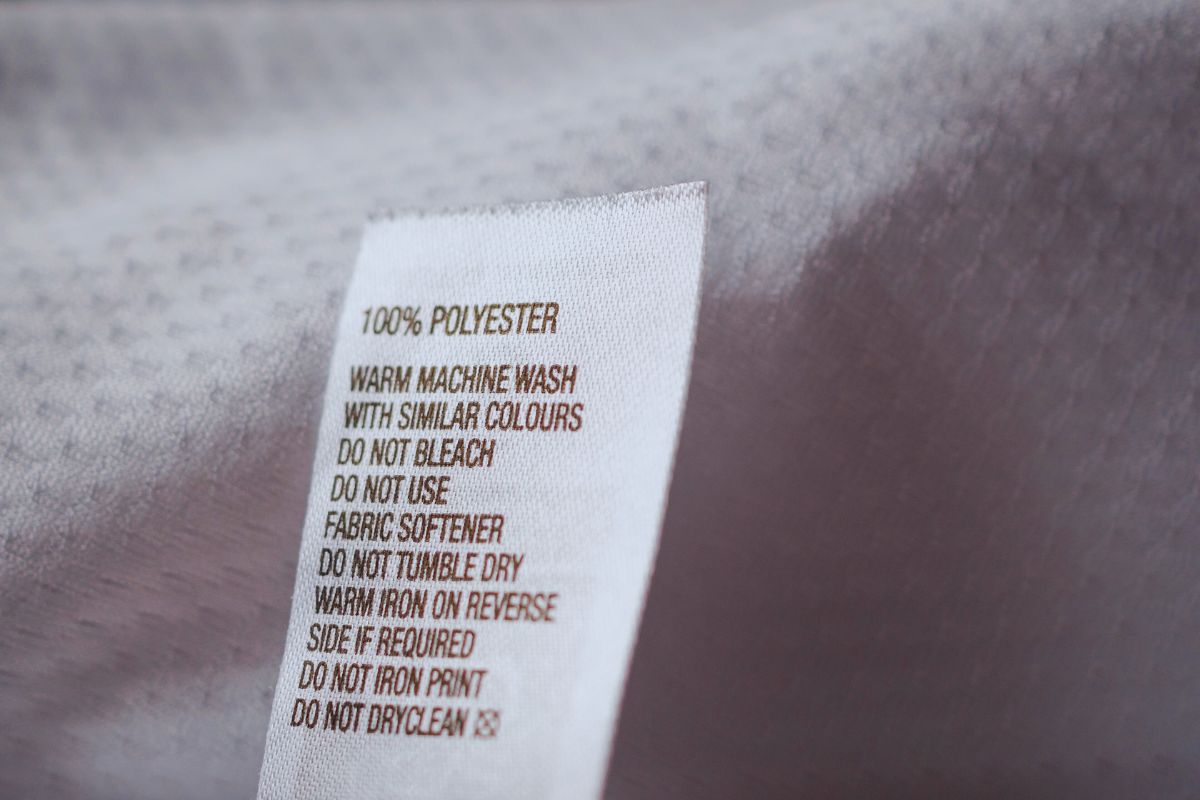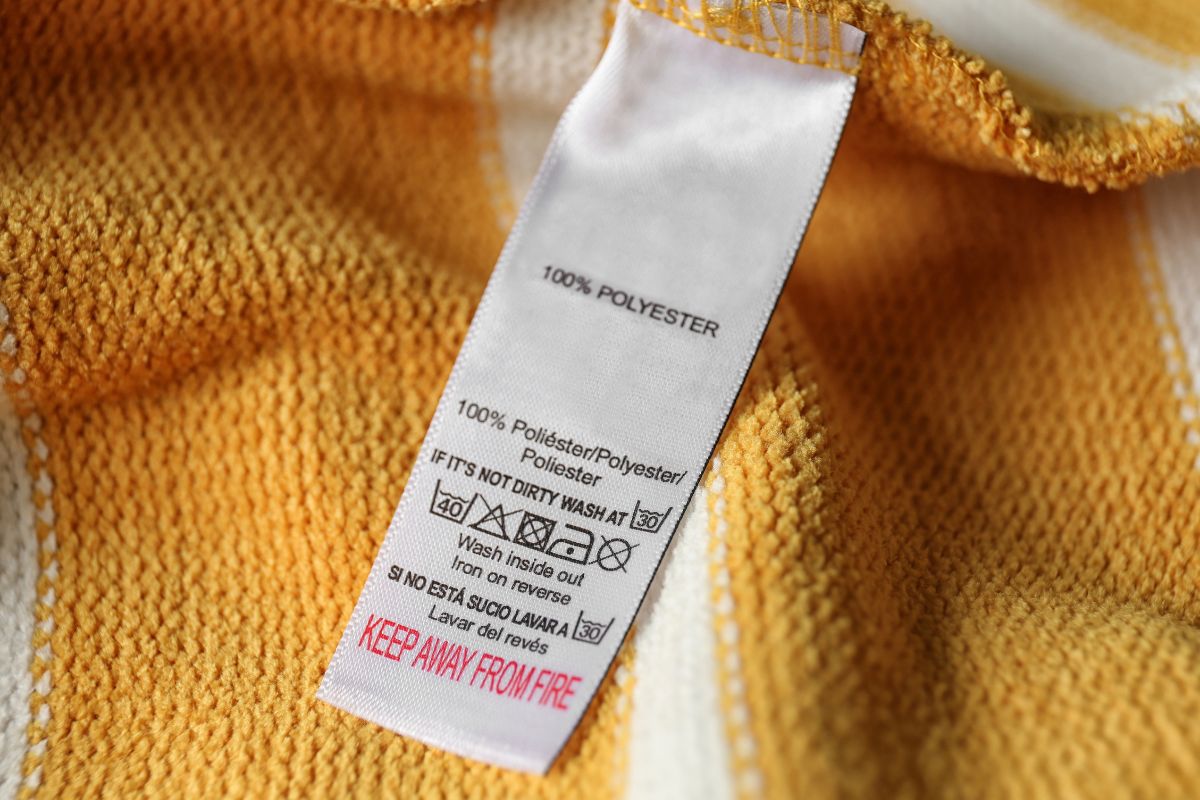Polyester is a durable synthetic fabric renowned for its longevity and ease of care, often chosen for its resistance to wrinkles and shrinking. When it comes to laundering polyester, you may have concerns about whether it can withstand the heat of a dryer without shrinking. The answer is nuanced: polyester is generally more shrink-resistant than natural fibers, but it isn’t completely immune to the effects of heat.
When drying polyester, it’s essential to use the right settings. High temperatures in a tumble dryer can cause this fabric to shrink, albeit usually less so than natural fabrics. To maintain the integrity of your polyester garments, it’s wise to adhere to care instructions often found on the tags of your clothing. By managing drying temperatures or opting to air dry, you can prevent most shrinkage and retain the original size and shape of your polyester items.
Understanding Polyester
In this section, you’ll learn about polyester, a synthetic fabric well-known for its strength and resistance to shrinking and wrinkles. It’s important to recognize how polyester compares to natural fibers in terms of properties and care requirements.
What Is Polyester
Polyester is a type of synthetic fabric that is derived primarily from polyethylene terephthalate (PET), the same material used in the production of plastic drink bottles.Polyester fibers are produced by a chemical reaction involving coal, petroleum, air, and water. This fabric is engineered for its durability and resistance to various conditions, making it suitable for a wide range of apparel and textile applications.
Synthetic Fibers and Their Properties
Synthetic fibers like polyester have specific attributes that set them apart:
- Durability: Polyester fibers are strong and tenacious.
- Easy Care: Polyester is machine washable and dries quickly.
- Wrinkle Resistant: Garments made from polyester tend to resist wrinkles.
- Low Moisture Absorption: Polyester is hydrophobic, meaning that it resists water and dries quickly, though this also limits its ability to wick away moisture when compared to natural fibers.
Comparing Polyester with Natural Fibers
When you compare polyester to natural fibers like cotton or wool, several differences stand out:
- Shrink Resistance: Polyester is less prone to shrinking compared to natural fibers. However, high heat can still cause polyester to shrink, particularly when blended with other natural fibers.
- Maintenance: Polyester requires less maintenance and is often favored for its longevity and ability to retain shape over time.
- Feel and Comfort: Natural fibers are often more breathable and comfortable against the skin, though modern technology has allowed for the development of softer and more skin-friendly polyester fabrics.
Shrinkage Factors of Polyester
| Polyester Fabric Type | Shrinkage Rate (%) | Shrinkage Description |
|---|---|---|
| 100% Polyester | 2-3% | Minimal shrinkage, retains shape and size well after washing. |
| Polyester Blends (e.g., with Cotton) | 1-2% | Slightly more shrinkage compared to 100% polyester, but still minimal. |
| High-Quality Polyester | <1% | Negligible shrinkage, maintains its original dimensions effectively. |
| Polyester Knits | 2-4% | Can experience slightly higher shrinkage due to the knitting process. |
| Textured Polyester (e.g., Crepe) | 1-3% | Varied shrinkage rates depending on the texture, generally minimal. |
| Heat-Set Polyester | <1% | Treated to resist shrinkage, ensuring minimal changes in size. |
| Polyester with Stretch | 2-4% | Stretch polyester may experience slightly more shrinkage due to its composition. |
Understanding how polyester reacts to various factors can help you care for your garments effectively.
Does Polyester Shrink
Generally, polyester is quite resistant to shrinkage. Unlike natural fibers, high-quality 100% polyester is not prone to shrink under normal washing and drying conditions. However, when polyester is blended with other fibers, especially those that shrink easily like cotton, the shrinkage resistance slightly decreases. It’s important to check the fabric blend to predict how your garment will behave in the dryer.
Heat and Polyester Interaction
Heat is a crucial factor in the shrinkage of polyester. Polyester fibers are made of polymer, which can withstand a certain level of heat. However, excessive temperatures may cause the fibers to contract. When you dry polyester, it’s advisable to use low or medium heat settings. High temperatures can weaken the fibers leading to shrinkage or warping over time.
Water’s Role in Shrinkage
Polyester’s interaction with water, especially during the drying process, is minimal in terms of causing shrinkage. Polyester is hydrophobic, meaning it repels water and dries quickly. The water temperature during washing has little impact on polyester shrinkage. However, using cold water is generally safer for washing as it reduces any risk of heat-related shrinkage when the item is later transferred to the dryer.
Laundry Care for Polyester

Understanding the proper care methods for polyester is essential to maintain its durability and appearance. Adhering to specific washing and drying instructions ensures your polyester garments stay in great shape.
Washing Polyester
When laundering your polyester clothing, check the care label first for any specific instructions. You should typically use a mild laundry detergent and wash on a cool or warm cycle—generally under 40 degrees Celsius—to prevent any potential damage or shrinkage. Front-loading washing machines are usually more gentle on clothes, but if you’re using a top-loader, consider using a mesh bag to protect the fabric.
- Fabric Care: Use a gentle cycle, with a mild detergent.
- Washing Machine Settings: Opt for a cool or warm wash.
Drying Polyester
For drying polyester, low heat or no heat settings in the tumble dry option of your dryer are safest. To completely avoid any risk of shrinking, air drying is the most cautious approach. However, if you must use a dryer, remove the clothing while it’s still slightly damp to hang and finish air-drying.
- Tumble Dry: Set your dryer to low heat or use a no-heat air-dry cycle.
- Air Drying: Lay flat or hang the garment to dry naturally.
By carefully following these washing and drying methods, your polyester garments will retain their shape and texture after each laundry cycle.
Guidelines for Polyester Garments

When caring for polyester garments, your approach to washing and drying plays a critical role in maintaining their size and texture. Follow these specific guidelines to ensure longevity and prevent shrinkage.
Reading Care Labels
Always begin by checking the care label or tag on your polyester garment. This label provides essential instructions from the manufacturer regarding safe wash and dry temperatures. It’s not just a tag; it’s your best guide to maintaining the garment’s quality and fit.
Washing and Drying Temperatures
- Wash Temperature: Keep the water temperature below 40 degrees Celsius (104 degrees Fahrenheit) to prevent shrinking. Polyester is resilient but can warp under high heat.
- Drying Temperature: Use a low heat setting if machine drying—excessive heat can cause the material to shrink.
Handling Blended Fabrics
- Polyester Blends: Items made from a mix of polyester and natural fibers, such as wool, rayon, or spandex, require extra attention.
- Wash blended fabrics with a temperature attuned to the most sensitive material in the blend.
- Dry blended garments on a setting suitable for the most delicate fiber content.
Turning garments inside out before washing can help preserve color and prevent snags, especially with blended fabrics. Adhering to these guidelines will aid in maintaining the integrity of your polyester and polyester-blend clothing.
Preventing Polyester Shrinkage

When dealing with polyester garments, your main focus should be on retaining their original size and shape. The key to preventing shrinkage lies in proper laundry care and handling techniques that cater to the synthetic nature of polyester.
Best Practices in Laundry Care
- Washing Temperature: Always wash your polyester clothing at temperatures below 40 degrees Celsius to prevent the material from shrinking. Even when blended with other fabrics, such as cotton, low heat maintains the integrity of the fibers.
- Drying Techniques: Air-dry polyester garments when possible. If you must use a dryer, opt for a low heat setting and remove the items while they are still slightly damp to minimize shrinkage.
Techniques for Minimizing Shrinkage
- Ironing: Iron polyester on a low heat setting to avoid damaging the fibers. Excessive heat can cause the fabric to shrink, so use a protective cloth between the garment and the iron if necessary.
- Handling While Wet: Polyester is most vulnerable when wet. Handle your clothing gently without wringing it out to prevent distortion or shrinkage.
- Storage: Store your polyester garments in a cool, dry place away from direct heat sources. High temperatures, even outside the dryer, can lead to gradual shrinkage and damage.
By adhering to these practices, you ensure that your 100% polyester and polyester blend clothing remains durable and shrunken surprises are kept to a minimum.
Troubleshooting Common Issues

Encountering shrinkage or damage with your polyester garments can be disappointing, but understanding how to manage these issues is key to maintaining the integrity of your fabric. In this section, we’ll discuss specific methods to address shrinkage and heat-related damage.
Restoring Shrunken Fabrics
If your 100% polyester item has shrunken, there’s a chance to restore it to its original size. Polyester is less likely to shrink than natural fibers like cotton, but incorrect heat settings in the dryer can still cause it to contract.
- Soak: Submerge the shrunken article in warm water mixed with a gentle conditioner or baby shampoo for about 15 minutes. This helps relax the fibers.
- Stretch: After soaking, gently stretch the garment back to its original shape and size. Be careful not to overstretch, as this can stress the fibers.
- Dry: Lay the apparel flat on a towel and let it air dry.
Note: These methods are more effective on polyester blends than on 100% polyester, as the blend fibers provide more give.
Dealing with Melting and Damage
Polyester’s resistance to wrinkles and durability make it a popular fabric choice; however, melting or heat damage can still occur.
- Lower Heat: Always use a low heat setting when drying polyester, as high temperatures can cause melting.
- Dryer Balls: Using dryer balls can be beneficial in preventing the concentration of heat and reducing static without harsh chemicals.
- Specific Instructions: Follow the care label for specific instructions as some polyester garments, such as those that are 95% polyester, may have unique care requirements.
- Immediate Action: If you notice heat damage, quickly remove the item from the dryer to prevent further compromise to the fabric’s integrity.
A reminder: Polyester’s heat-related issues are typically a consequence of too high temperatures in laundering processes.
Frequently Asked Questions
Polyester is known for its durability and resistance to shrinkage. However, high temperatures can alter its structure. Here’s how to manage polyester care and understand its behavior when exposed to heat.
How should polyester be dried to prevent shrinkage?
To prevent shrinkage, you should dry your polyester garments at low heat settings or opt for air-drying. Washing below 40 degrees Celsius and avoiding hot dryers are effective measures to maintain the fabric’s original size and shape.
What is the effect of heat on 100% polyester fabric in a dryer?
Heat can potentially change the structure of 100% polyester fabric; it is resistant to shrinking but not entirely immune. Subjecting polyester to high temperatures in a dryer increases the risk of slight shrinkage.
Can I intentionally shrink polyester clothing, and how might that be accomplished?
If you intend to shrink polyester clothing slightly, you can try using a warm wash and a hot dry cycle. However, the results are not as predictable as with natural fibers, and this should be done cautiously to avoid damaging the garment.
Is it safe to put polyester garments in the dryer?
It is generally safe to put polyester garments in the dryer as long as you use a low or moderate heat setting. Check the care label for the best practices for drying that particular item.
How does shrinkage in polyester compare to that in cotton when tumble-dried?
Polyester typically shrinks less than cotton when tumble-dried because it’s a synthetic fabric engineered for minimal shrinkage. Cotton is a natural fiber more prone to shrinkage under heat and agitation.
Will a polyester blend fabric shrink more or less than pure polyester?
A polyester blend may shrink more than pure polyester as it often includes other fibers like cotton or rayon, which are more susceptible to shrinkage. It’s important to follow the specific care instructions for blended fabrics.



